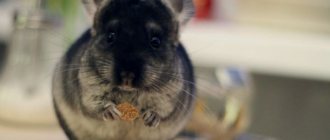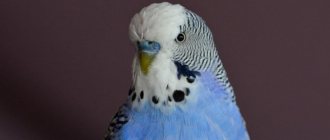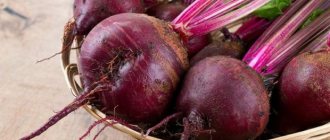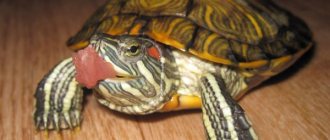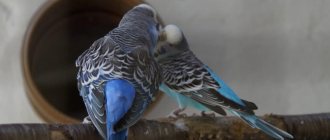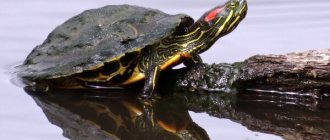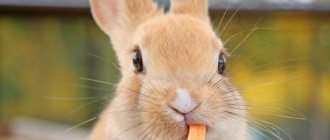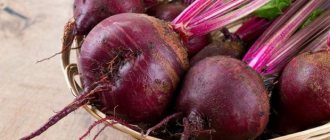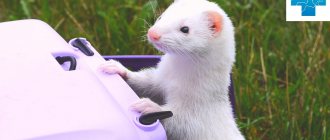Lovebirds make great pets as they are small, active and cheerful birds. Proper feeding will ensure that they feel good. Start by choosing food that is suitable and healthy for these parakeets. You can then create a feeding schedule. It will ensure that your parrots get enough food and nutrients on a regular basis. From our article you will learn what you can feed lovebirds at home. In addition, sometimes in order for the chicks to develop well, they are fed by hand. Although this can be a very time consuming process. We will also tell you further about how to properly feed lovebird chicks.
Finding the right granulated food for lovebirds
What are the benefits of food pellets and why is it an ideal food for poultry? The fact is that this food is designed to give birds all the beneficial elements that their bodies need every day. Choose pelleted food based on the age of your lovebirds. Make sure your feed pellets contain natural ingredients. Also check that they do not contain harmful additives or preservatives.
- Various granular feeds are sold for adult lovebirds and chicks. Birds aged ten months and older are called adults.
- Look for lovebird food at local pet stores or online.
Features of nutrition during the mating period
Healthy nutrition is especially important for parents during the period of hatching and feeding chicks. The quality of feed and its composition will affect the health of future young animals. During this period, breeders advise eliminating industrial additives and replacing them with natural ones.
During the brooding period
It is especially important for the female to get enough calcium, because it is responsible for the formation of eggshells. Due to the lack of the element, the eggs will be fragile: even a small crack on the surface will lead to disastrous consequences.
Products necessary for the female during the brooding period:
- chicken eggs;
- walnuts;
- cottage cheese;
- sprouted wheat;
- pea or rice porridge.
While feeding the chicks
As soon as the young animals appear, the female gives them gruel from the crop. A little later, the male joins in the feeding, providing the chicks with semi-digested food. During this period, birds need foods rich in proteins, vitamins and minerals. All these elements can be found in crumbly cereals and sprouted grains.
When feeding chicks, veterinarians recommend adding special preparations to the parents’ food that promote rapid absorption of calcium and are rich in group D vitamins. You can buy them at any veterinary pharmacy.
It is also useful to read: Jaco Parrots
Choose a high-quality seed mixture that your birds will enjoy eating.
Your task is to find or make your own mixture that has a wide variety of grains. What seeds do lovebirds eat from seeds? Perfect for: millet, canary grass seeds, oatmeal, niger seeds, flax, sunflower, safflower and rapeseed.
Other seed mixtures may contain soybeans, fennel seeds, rye, whole brown rice, sesame and poppy seeds.
- The seeds do not have much nutritional value for lovebirds. Therefore, they are recommended to be given only in very small quantities as treatment. They should never be your bird's only food source.
- Use only fresh seed mixture. If it smells dusty or old, you shouldn't give it to lovebirds.
Mineral supplements
During the period of active growth, when changing plumage, during nesting, lovebirds need increased nutrition. Regular food does not contain enough minerals; in addition, not all micro- and macroelements are properly absorbed. To compensate for the lack of nutrients, parrots need mineral supplements:
- sepia (cuttlefish shell);
- chalk;
- bone flour;
- organic sand;
- clay;
- nut and eggshells;
- slaked lime.
Pet stores sell a specially selected Rio mineral mixture for parrots, which includes components for the proper functioning of the digestive system. A hard mineral stone is fixed to the wall of the cage to make it easier for lovebirds to break off pieces.
Setting a Feeding Schedule
Now in proportions about what to feed lovebirds. One tablespoon (fourteen milliliters) of food daily is enough for one lovebird. Seventy percent of the diet should be pellet food. The remaining thirty% is a combination of various vegetables and fruits.
Try to feed your lovebirds at the same time every day. Then they will get used to feeding time.
Fruits and vegetables must be thoroughly washed
Only after this can they be given to parrots. For washing, use clean running water. Then cut the food into small pieces and place them not in the feeder with food, but somewhere else in a plate. You don't need to peel fruits or vegetables, as most lovebirds can digest skin.
- Try to give a variety of fruits and vegetables. Don't feed them the same foods over and over again.
- Give your lovebirds vegetables and fruits as small snacks once or twice a day.
We talked about what they eat and what you can feed your lovebird at home. Now let's touch on the issue of drinking.
Daily norm
In order for the bird’s nutrition to be correct and balanced, it is important to maintain proportions. An adult lovebird needs two to three tablespoons of dry grain per day. If parrots eat wet food well, it can be given without restrictions, but alternate types of fruits every day. For example, today offer your pet a quarter of an apple, tomorrow grate raw carrots, then fresh berries.
On days when the lovebird receives protein food, the amount of succulent food should be reduced. Let the greens be present in the cage every day, but they must be fresh, without signs of spoilage. Wet foods should not be left overnight; before going to bed, they are removed and grain is poured into the feeder. The bird wakes up hungry, it needs to peck something right away.
Pour clean water into the birds' water bowl.
Parrots need a lot of clean, fresh water. It should be changed daily. In addition, it is necessary to add water to the container if it runs out. Make sure the water bowl is full before going to bed. It is important that parrots have the opportunity to drink at night.
Always use shallow waterers to prevent birds from drowning.
Drink
A necessary condition for keeping parrots is that there should always be fresh water in the drinking bowl. Lovebirds can be given bottled or filtered water at room temperature. Plain tap water is quite suitable for parrots, but it must first be soaked until the chlorine evaporates. Boiled water should not be offered to a parrot, since when heated, its structure changes and some of the beneficial properties disappear.
For illnesses, lovebirds are advised to drink herbal tea - a drink that relieves inflammation and calms the nervous system. For infusions you can use dry chamomile and rose hips.
Important: Any liquid must be poured into a clean drinking bowl. When cleaning is done poorly, pathogenic microorganisms appear in containers.
Selection of syringes and feeds
Small syringes will do. You can purchase them at local pet stores and pharmacies in your locality. Now about what they feed little lovebirds. Here we need food for the chicks. Such food is often presented in powder form.
To prepare the feeding formula, you will need to mix the powder with boiling water. Follow the instructions on the packages. Then you will be able to correlate the amount of powder and water in the correct proportions.
What's prohibited
Some products contain elements that are dangerous to birds. When they enter a parrot's body, they become toxic, which ultimately leads to serious poisoning, and in severe cases can cause the death of the pet. When purchasing food and other additives, you should carefully study the composition on the packaging. If it is not indicated, then it is better to check with the seller or refuse the purchase altogether.
Dangerous products:
- potatoes in any form;
- pepper;
- meat fish;
- cheese;
- oil;
- garlic;
- sorrel;
- sour cream;
- mushrooms;
Branches of oak, lilac, pear, bird cherry and poplar are harmful to parrots. Before serving cherries, plums, peaches and other similar products, the pits should be removed. Food from the human table is also dangerous.
Feed lovebirds slowly
Hold the bird in one hand, with your fingers lightly clasping it in the chest area. Fill the syringe with the nutrient mixture to six to eight milliliters. Place a small amount on your palm and check that the mixture is not hot. It should just be warm to the touch. Gently tilt the chick's head up. Place the syringe into the parrot's beak. After this, start feeding.
Let the chick consume the mixture slowly and at its own speed. Don't force him to feed from a syringe.
Basic diet
Lovebirds are one of the most beautiful species of parrots. They can live for a long time in a city apartment. The main difference between this bird and others is its developed digestive system, which is constantly working. Hunger, poor quality food and an unbalanced diet can lead to the death of a pet and the absence of offspring. On the shelves of specialized stores you can see a huge number of grain mixtures, vitamins and various nutritional supplements.
The main features of a high-quality grain mixture for lovebirds:
- presence o,
- vacuum packaging,
- pleasant aroma and natural shine of the grain,
- absence of preservatives and dyes,
- specified deadline for implementation,
- absence of mold, unpleasant odor, dangerous insects and foreign debris,
- reasonable price.
When making your own grain composition, you need to mix millet, oats, sunflower seeds and canary seed . This recipe is basic and can be supplemented with other ingredients if necessary. Experienced poultry farmers recommend using not only purchased grain, but also natural products to feed birds. The maximum level of natural additives should not exceed ten percent.
The daily food intake per parrot should be no more than 25 grams. An increase in this indicator can provoke excessive weight gain, which will lead to a significant decrease in the activity of the bird, as well as to the appearance of dangerous diseases.
Hard food
Grain food is the basis of the lovebirds’ diet. This mixture may include the following grains.
- Forage oats. A healthy and nutritious cereal that contains unique and easily digestible amino acids. The main feature of the product is simultaneous food intake and strengthening of the beak.
- Unrefined millet. An irreplaceable feed, the amount of which can reach up to 50 percent in grain mixtures. It contains many vitamins, copper, phosphorus and amino acids.
- Millet. A product that can only be given to birds in boiled form. You can add a small amount of grated carrots or beets to the boiled porridge.
- Wheat . A must-have product that contains a small amount of fatty acids. The value of this cereal lies in the presence of proteins, carbohydrates, vitamins E and B. Experts recommend that before feeding, be sure to germinate the grains for 12 hours in a warm room.
- Corn. A healthy cereal, the grain of which must be soaked, crushed or boiled before serving. The grains of the “queen of the fields” contain carotene, trace elements, amino acids and vitamin K.
Birds love boiled porridges made from rice, buckwheat, peas and millet, which must be cooked in water without adding salt and sugar. You can add fruits or chopped vegetables to ready-made and cold porridge.
Seeds and nuts
Seeds and nuts are mandatory foods, the amount of which should be at 16 percent.
Let's look at the list of essential seeds and nuts in a bird's diet.
- Sunflower seed . An irreplaceable source of fats and fatty acids, as well as linoleic and linolenic acid.
- Hemp seed. A useful product that must be doused with boiling water and dried before use. This procedure will help remove the toxic film and make the seeds harmless.
- Flax-seed. An invaluable component that is not only food, but also medicine. Flax seed will protect the intestines from the effects of coarse fibers and also help cure cough and wheezing. The permissible amount of these seeds is 2 percent.
- Pumpkin seed. An essential ingredient in the diet of lovebirds.
- Nuts: peanuts, hazelnuts, walnuts and Brazil nuts. A nutritious treat that consists of fats, proteins, mineral salts, vitamins and phytoncides.
Canary seed, oatmeal, niger and safflower seeds, canola, soybeans, rye, fennel, dark rice, poppy seeds and sesame seeds will be beneficial for your pet's health Poultry farmers also recommend giving crushed acorns and chestnuts.
Vegetables and fruits
Along with dry food, birds need juicy and healthy vegetables and fruits. Experts allow feeding domestic birds the following delicacies.
- Cucumbers. A tasty product that contains a large amount of iodine and a small number of vitamins. A small piece of cucumber can improve immunity and speed up metabolic processes in the body.
- Pears and apples. The most delicious complementary food, which includes pectin, sugar, vitamin C, carotene, tannins and various microelements.
- Oranges and lemons . Tropical fruit that can be given with the peel. Lemon slices can be sprinkled with a little sugar. A few drops of lemon juice added to water will significantly improve your pet's condition.
- Rowan berries. A product that can be given both fresh and frozen.
- Melons and watermelons. Melon, which significantly diversifies the diet of poultry. It contains quickly digestible sugar, organic acids, iron, phosphorus and potassium.
Birds also like to eat green lettuce and cabbage, spinach, carrots, green peas, tomatoes, radishes and broccoli, sweet peppers, zucchini, pumpkin and rutabaga.
Favorite fruits and berries for birds are:
- banana,
- rose hip,
- grape,
- strawberry,
- raspberries,
- kiwi,
- figs,
- pitted cherries,
- grapefruit,
- lime,
- pomegranate,
- peach,
- apricot,
- gooseberry,
- grape.
In winter, these vegetables and fruits can be given dried. It is strictly forbidden to give birds avocado, papaya, mango and persimmon.
Greens and twigs
Greens and tree branches are an indispensable component in the diet of birds. To get the maximum benefit from the green mass, it must be collected in ecologically clean areas and immediately given to the birds.
Poultry farmers recommend paying attention to the following green products:
- parsley, dill and onion - products that will enrich the body with vitamins and microelements, as well as restore strength, prevent the appearance of parasites and improve the functioning of the digestive system,
- nettle leaves - hot food, which before serving must be scalded, finely chopped, and only then added to the feeder,
- bean asparagus is a healthy green that improves metabolic processes in the body and normalizes blood composition.
We should not forget about dandelion and currant leaves, clover and alfalfa. This greenery can be given not only fresh in summer, but also dried in winter.
Birds love to feast on young branches and buds of willow, birch and apricot . Pets sharpen their beaks and claws in the process of gnawing twigs.
Animal feed
For the full development of the body, veterinarians recommend introducing animal products into the diet, which contain large amounts of protein. The most important products are the following.
- Whole milk. This is a source of calcium. Poultry farmers recommend cooking porridge on it or dipping small pieces of bread in it.
- Boiled egg.
- Friable curd mass. A healthy complementary food that should be given in very small portions and, if necessary, mixed with honey.
- Fish fat. A source of vitamins such as A, D, as well as iodine and phosphorus. This additive should be added to cooked porridges.
Mineral supplements
During the period of feather change and nest formation, special attention should be paid to mineral supplements, which can serve as the following products.
- Cretaceous rocks. It is an essential source of calcium. It is permissible to use only pure feed product.
- Egg shells. Source of calcium, phosphorus, magnesium and iron. This additive should be given in crushed form, having previously washed and warmed the fertilizer.
- Clam shells.
- Dried plaster. A good source of calcium and also a beak sharpener.
Charcoal or activated carbon, bone meal and lime will be useful for birds.
Particular attention should be paid to the pet's drinking regime. The cage must be equipped not only with a drinking bowl, but also with a place for bathing, where clean, fresh and filtered water must be poured daily. Birds love to enjoy freshly squeezed fruit and vegetable juices, rosehip and chamomile tea, to which you can add a little honey.
Poultry farmers recommend paying special attention to prohibited foods that should absolutely not be given to parrots:
- hot pepper,
- caramelized fruits,
- mayonnaise,
- ketchup,
- fast food,
- fried food,
- chips and crackers,
- alcohol,
- tea and coffee,
- salt,
- spicy spices,
- meat,
- fish,
- seafood,
- butter,
- hard and processed cheese,
- milk cream and sour cream,
- potato,
- seeds of all fruits,
- eggplants,
- sorrel and rhubarb leaves,
- onions and garlic.
Check your lovebird's crop for swelling
The crop is the upper part of a parrot's abdomen that swells when it eats. As soon as it begins to bulge, stop feeding the bird.
Feed your parrot the mixture every three or four hours. Always continue feeding until the crop becomes prominent and no more.
